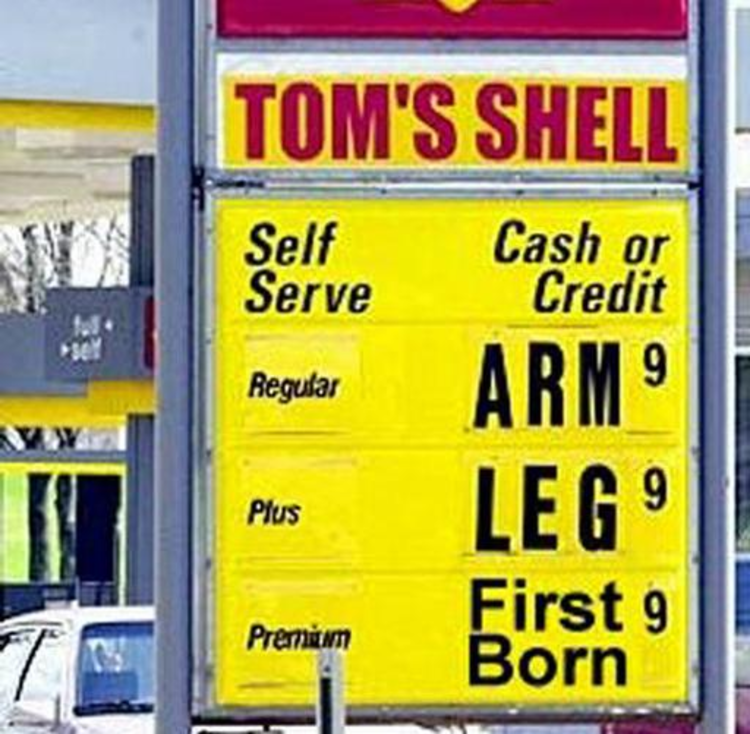
Soaring gasoline prices cause anxiety for locals
The Tri-Parish Times - October 27, 2005
Randy Savoie wants to go to the LSU football game this week against Troy State in Baton Rouge, but the 20-year-old Houma resident doesn’t have extra money to spend.
In fact, his wallet has taken such a hit lately that he recently bought a cheap gift for his nephew’s 6th birthday party. And considering he has to drive about 100 miles a day to and from the University of New Orleans in a car with low gas mileage, he barely has enough dollars to even pay for fill-ups at the convenience stations along the way.
“It’s getting rediculous,” said Savoie, who makes minimum wages checking out groceries at part-time at a local store. “I’m going to have to carpool with other UNO students in the area, move on campus or transfer to Nicholls. I may have to do something if the prices keep going up.”
Like Savoie, other motorists are facing the same level of anxiety as gasoline prices continue to rise near the $2 mark at fuel stations in the Tri-parish area. According to AAA, statewide prices for regular unleaded gasoline averages about $1.91 a gallon, the highest it’s been since May 28th’s $1.94 mark.
Nationally, gasoline prices are averaging about $1.98 a gallon, with cheaper fill-ups in the Mid-Atlantic region and costlier fuel in New England and on the West Coast. October prices in 2003 stood at $1.56 nationally and $1.44 in Louisiana. Crude oil prices floating above $53 a barrel have been contributing to the escalating trend for gasoline prices that have increased more than 13 cents in the Southeast region since mid-September.
“The most dominant factor is the case of demand outpacing supply,” said Donald Redman, spokesperson for AAA Louisiana. “That’s economics 101 stuff and we’ve just not been able to keep up with demand. The prices will continue to rise as a result.”
Redman said an active hurricane season in the Gulf of Mexico is partially to blame for rising fuel costs. The storms have left oil and gas platforms in shambles, limiting U.S. production. More than 475,000 barrels per day, or 27 percent, of oil output in the Gulf of Mexico remains shut, according to the U.S. Minerals Management Service.
In addition, many refineries are now focusing on meeting the demands of heating oil to warm homes during the upcoming winter season instead of gasoline production. As the shortages in the Gulf of Mexico stretch supplies, motorists are being hit by the rising crude oil prices. And lately, the rising crude oil price has been affecting gas prices at the pump, AAA reported.
Hurricane Ivan's total impact alone has surpassed the troubles Hurricane Lili and Tropical Storm Isodore caused in 2002, the last time storms seriously affected oil and gas operations in the Gulf of Mexico. Some reports estimate at least 40 million barrels equivalent of oil and gas will be deferred by Hurricane Ivan -- 17 million barrels of oil, four million barrels of natural gas liquids and 110 billion cubic feet of natural gas.
“Not only have some rigs been damaged to slow down production, but many rigs and refineries had to shut down long before in anticipation of the storms,” Redman said. “That slowed down production long before even now. After the storms, the Gulf was pretty much unpassable and stopped imports of crude oil and gasoline to be shipped to the United States.”
Potential disruptions with foreign oil suppliers have also caused concern for petroleum buyers. A labor strike in petroleum-rich Nigeria and strife among oil workers in Norway have caused output to drop several hundred thousand barrels a day. Consumers are also concerned about possible interferences in major oil-producing nations Iraq, Saudi Arabia, Russia and Venezuela.
Redman said another contributing factor was OPEC’s decision to cut oil production last year to stabalize prices at $25 to $30 a gallon. He said that plan has backfired with the current production problems and the petroleum industry is struggling more than it should be.
Herb Stathus, president of Hill City Oil Co. in Houma, said he anticipate the costs of gasoline will start to drop in a couple months once operations in the Gulf of Mexico are back in full swing. Until then, he said, gasoline costs will climb higher until supply meets or exceeds the demands. The
Associated Press contributed to this report.
